Our wine dinner group met once again for our bi-weekly outing, this time at our fav Sushi bar, Arigato.
Typically, we have from 8-12 attend, but COVID times have reduced the numbers to 5-7 and on this night, 5 of us were seated on the outside back courtyard area where distancing from others was quite easy and comfortable.
While delighting in way too much world class Sushi, we conversed on all subjects and drank well:
2006 BILLECART-SALMON CUVEE NICOLAS FRANCOIS BRUT- the inaugural release of this cuvee was in 1964 to pay tribute to the co-founder (who married Elisabeth Salmon); it is typically made of 60% Grand Cru Pinot Noir and 40% Grand Cru Chardonnay; 5% of the wine is vinified in old oak barrels before spending 11 years on its lees and undergoing partial malolactic fermentation; it is sugar dosed at 4 gpl; following the mild yellow color came aromatics of nice citrus fruit, especially lemon; on the palate, it gave up more of the same plus mild honeyed orange, apple and pear fruit along with a surprising and undesired touch of straw/ hay/ grass, Sauvignon Blanc like character, that eventually blew off to allow for the more charming nuances to be experienced; it had bright acidity and a wondrous creamy mouthfeel; I was so expecting this to be stellar out of the gate, but it took at least 40 minutes before the straw/ grassy accent dissipated and allowed for it to be experienced for the glamorous wine it is intended to be IMHO.
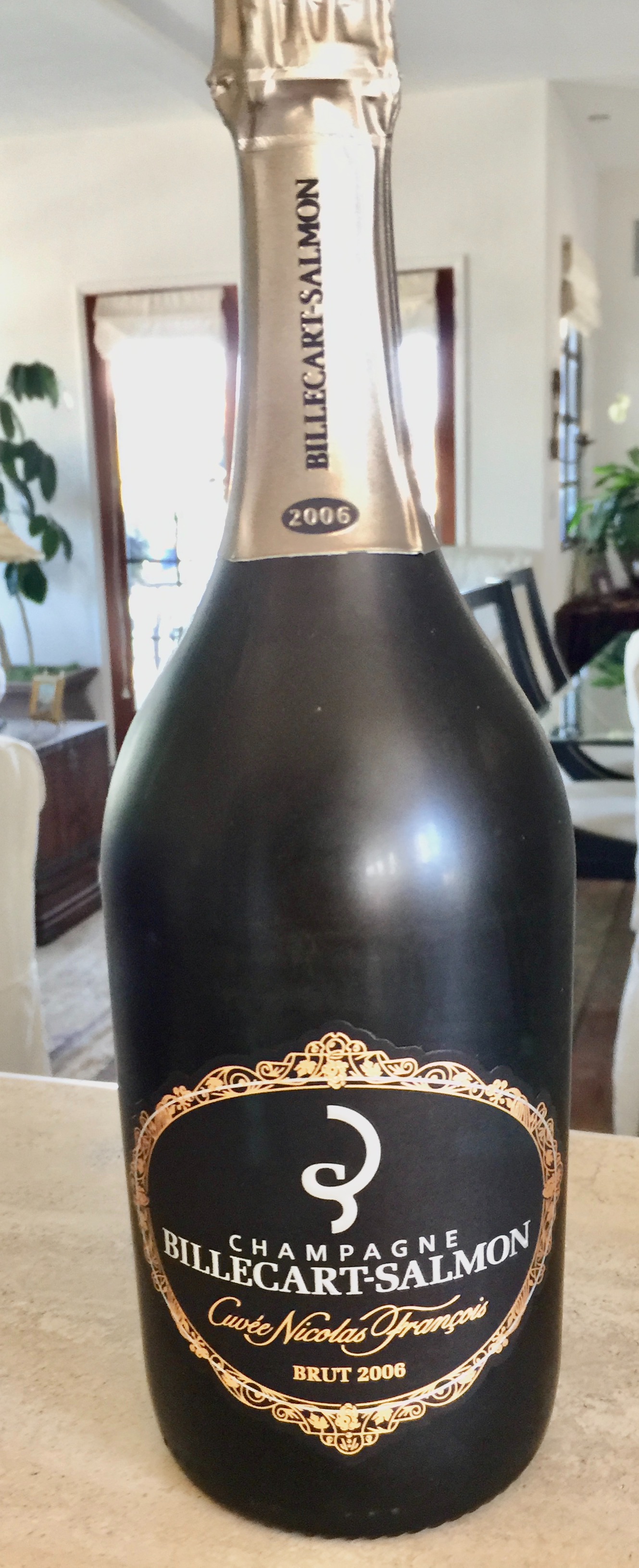
2014 DOMAINE HUET VOUVRAY PETILLIANT CUVEE BRUT- this is basically Chenin Blanc with a spritz and it’s good too plus it comes with a full throttled profile starting with it’s vibrant yellow gold color; stone fruit dominates the aromas and taste which more specifically includes peach, apricot and yellow nectarine along with a hint of apple and lemon zest; it’s full bodied with lots of weight and finishes on a huge upswing. this was the antithesis of the B-C.
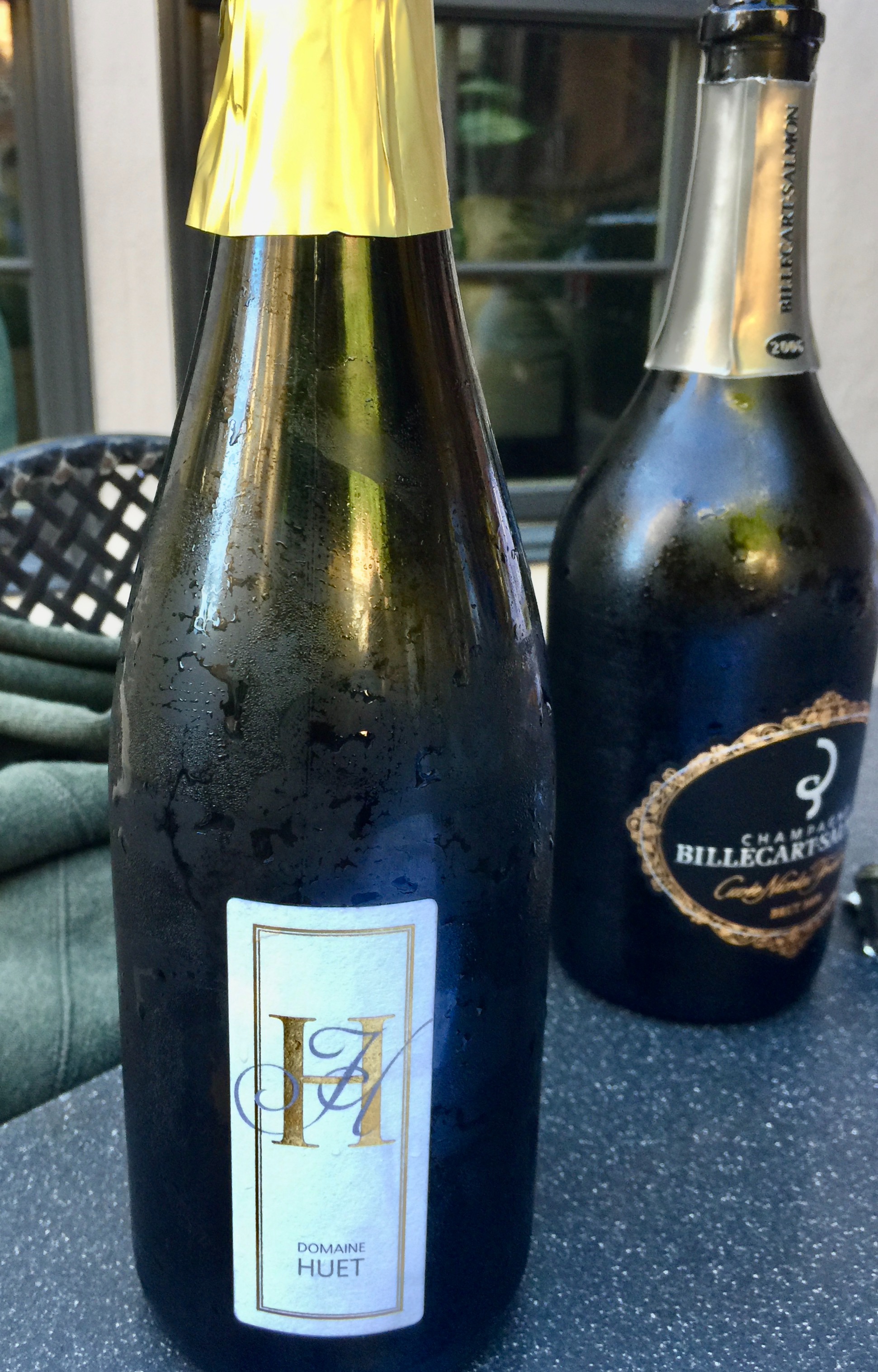
2015 FORSTMEISTER GELTZ ZILLIKEN SAARBURG RAUSCH RIESLING SPATLESE- 8% abv with 92 gpl RS; when I learned of the residua sugar when writing up the notes, I was surprised to find it so high as the wine was not all that super sweet as my notes reflect that it contained lightly honeyed lemon/ lime; it had a medium body at best and was delivered via a medium textured fluid; for me, it was very pleasant as I’m really not all that fond of sweet wines beyond a small sampling; the one who brought it could and has made an entire evening out of dessert wines.
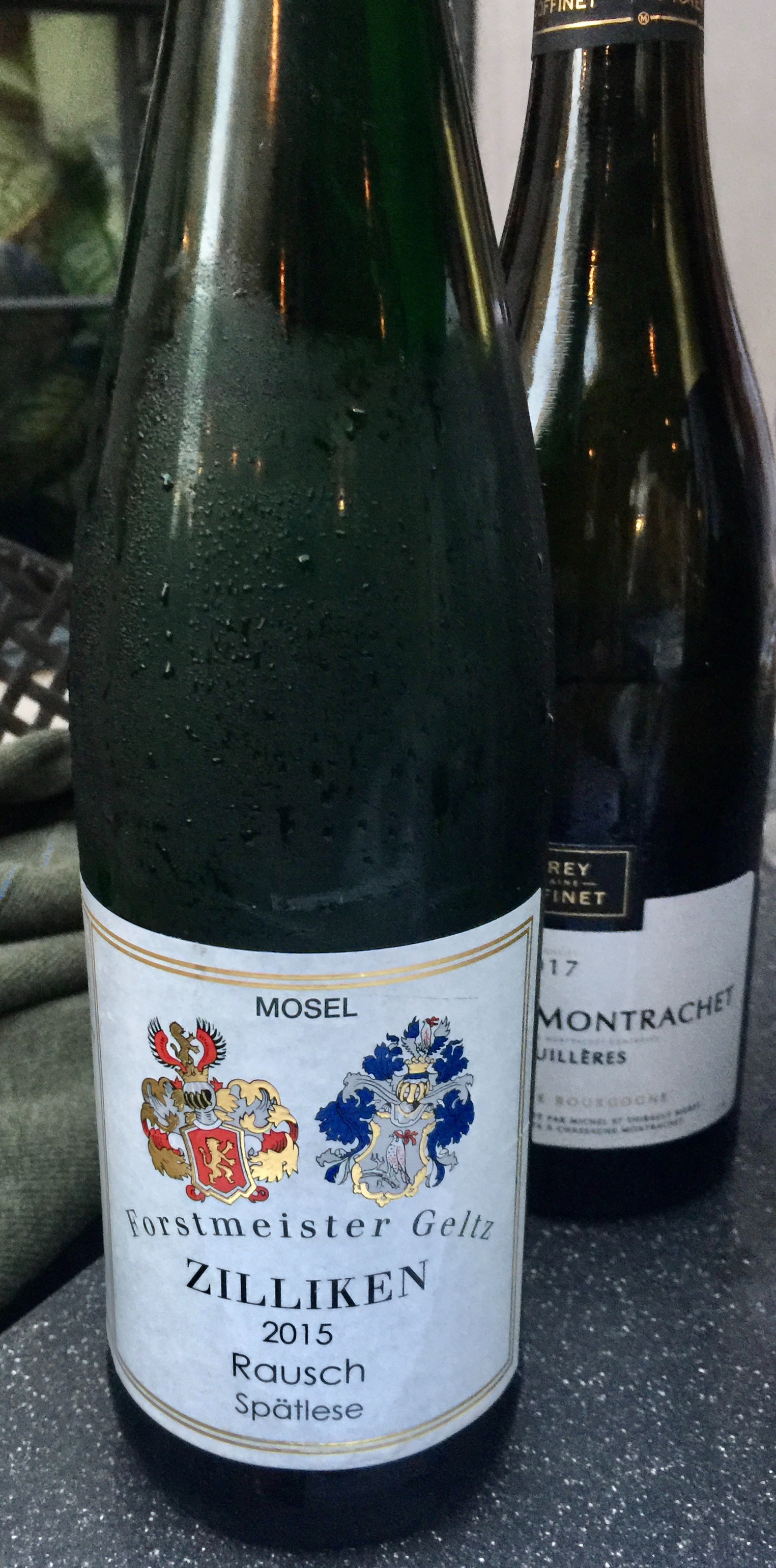
2016 JJ PRUM WEHLENER SONNENUHR SPATLESE- 8% abv; this was the 2nd bottle I’ve had in the last week and the notes are very consistent; it has lovely sweet peach, mango, orange and lime fruit accented with minerality from the nose through the tail and was gracefully delivered in a smooth, creamy medium that completed the wondrous sensory experience.
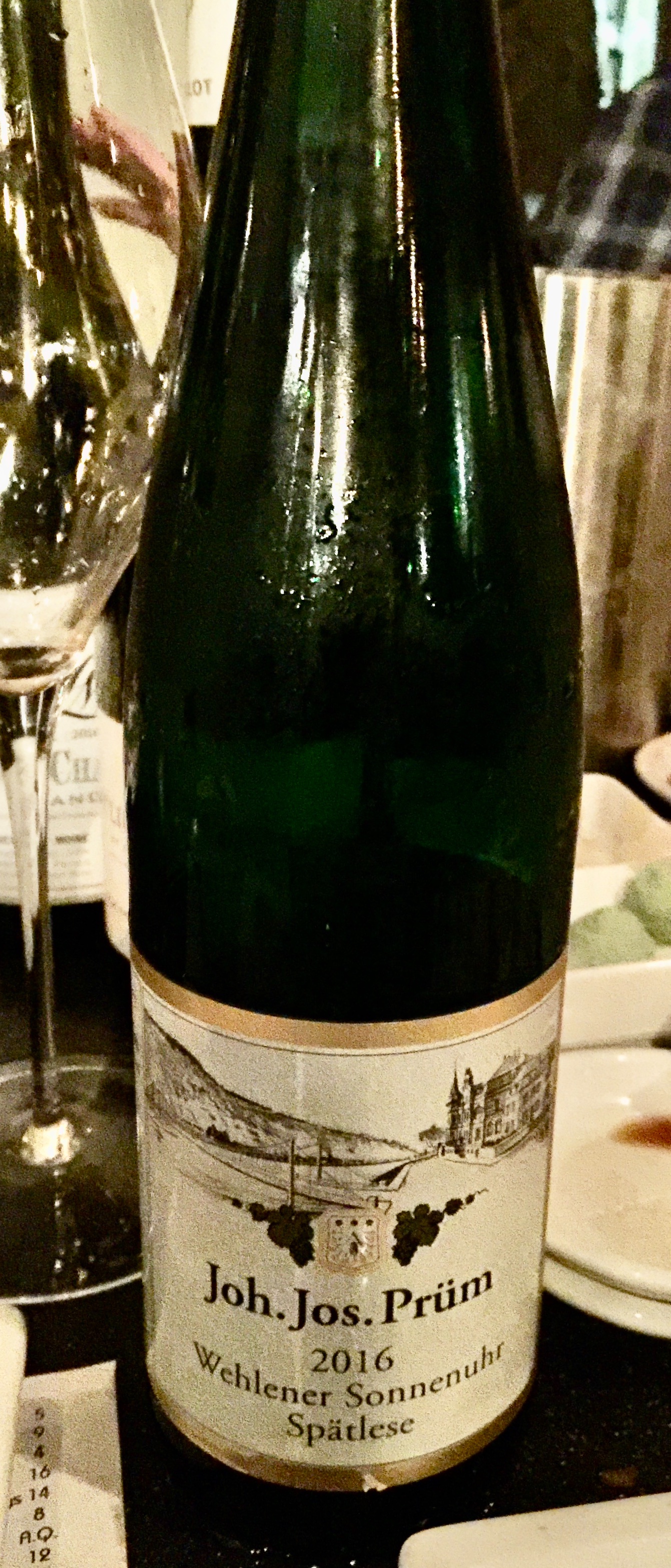
2016 LUCIEN LE MOINE CORTON-CHARLEMAGNE GRAND CRU- the nose was so inviting with aromas of fresh cut white flowers, citrus and even some spice, all of which continued on with minerals, saline, lemon, orange and apple fruit joining in by mid palate; the texture was a soft and smooth medium which carried all of the goodness to the back end where it hung on for a long and satisfying finish; overall, it comes off as just a bit on the green side with time the only necessary factor needed to allow this to really shine. A decant would have been helpful.
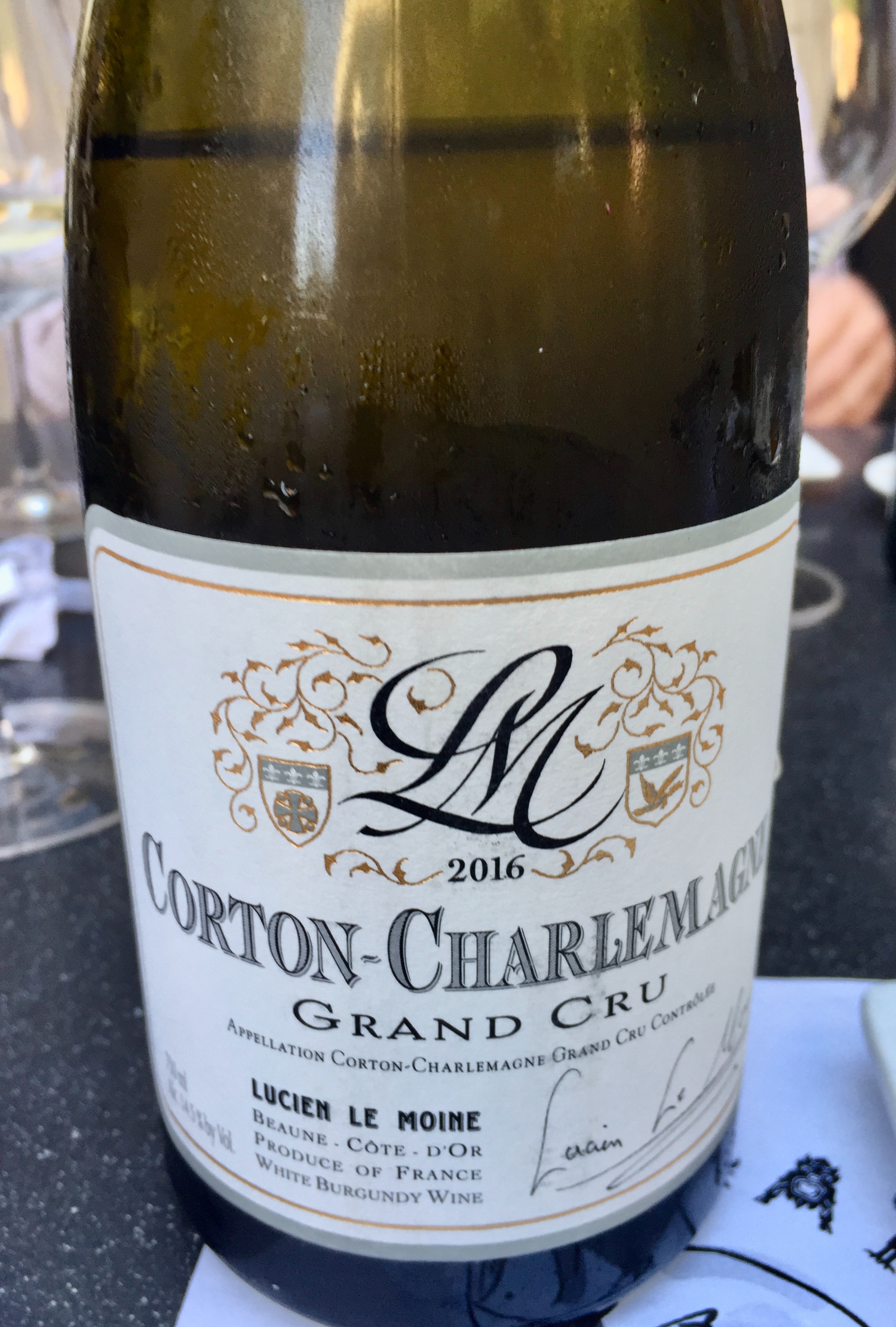
2017 MOREY-COFFINET les HOUILLERES CHASSAGNE-MONTRACHET- this is my 3rd bottle of this beauty and all have been really good and shared with most of the same folks; the nose had the requisite citrus inundated minerals and flint notes and the taste showed more specifically lemon, apple and pear fruit with the mineralality blending in nicely; it is full bodied with medium+ weight and has great feel and length; lovely wine that just gives and gives at this youthful age.
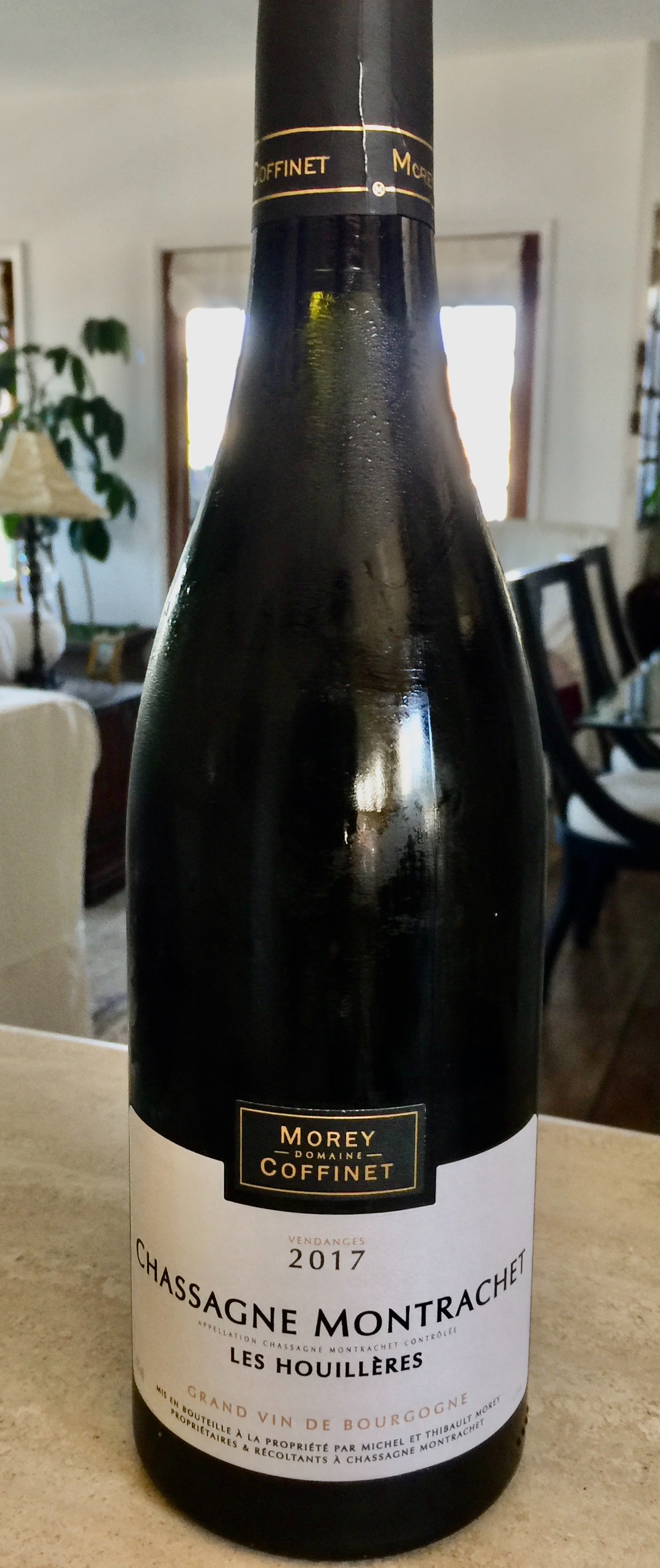
2011 HENRI BOILLOT les PUCELLES PULIGNY-MONTRACHET 1er Cru- yellow color; mellow nose with a hint of spearmint accented citrus which in the taste becomes more pronounced as lemon, vanilla and golden delicious apple, also with that streak of spearmint that extends throughout providing an unusual and different nuance from what one would expect from this exceptional Grand Cru quality vineyard.
This was another great evening for sure as the small number allowed for all to share in a table conversation and commune more collectively as a group.
Cheers,
Blake